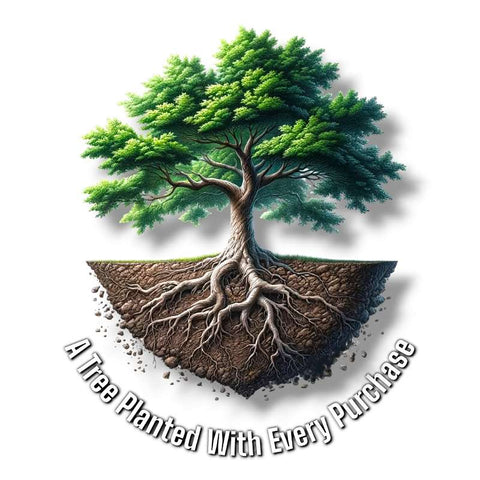The Future of Specialty Coffee in a Changing Climate
Understanding the Impact of Climate Change on Specialty Coffee

Climate change is an existential threat that has far-reaching consequences, impacting not only ecosystems but also industries that depend on stable climates. One such industry heavily affected by climate change is the specialty-grade coffee market, a sector that relies on specific environmental conditions to produce high-quality beans. As global temperatures rise, weather patterns become more unpredictable, and growing conditions are disrupted, coffee farmers are increasingly facing challenges in maintaining the quality and supply of specialty coffee.
In this article, we will explore the present and future impacts of climate change on this vital industry, supported by scientific research, case studies, and expert insights. From rising temperatures and altered rainfall patterns to the threat of pests and diseases, the specialty-grade coffee market stands at a crossroads, facing unprecedented challenges that could redefine the future of coffee cultivation.
While the impacts of climate change are felt across many industries, the coffee sector is particularly vulnerable. Let’s explore some of the most pressing present-day challenges affecting coffee production and what they mean for the future of specialty coffee.
Present Challenges in Coffee Cultivation

Rising Temperatures:
One of the most immediate and pressing effects of climate change on the coffee industry is the rise in global temperatures. Coffea Arabica, the species responsible for over 60% of the world’s coffee production, is highly sensitive to temperature fluctuations.
Ideally, Arabica coffee thrives at altitudes between 1,200 and 2,000 meters, where temperatures range from 18°C to 22°C (64°F to 72°F). However, studies have shown that even slight increases in temperature can disrupt the delicate balance needed for high-quality bean development [1].
A significant study published in World Coffee Research projects that by 2050, the regions suitable for Arabica cultivation may decrease by up to 50%. This is particularly alarming as it will force coffee farmers to seek higher altitudes or migrate to cooler regions, disrupting local economies and threatening biodiversity. In Brazil, the world’s largest coffee producer, average temperatures are expected to rise by 1.5°C to 2°C by 2050, which could result in a 25% reduction in coffee-growing areas in the country. As a result, farmers will have to adapt quickly or risk losing their livelihoods.
But temperature isn’t the only factor affected by climate change. The changing patterns of rainfall also present significant challenges for coffee cultivation, especially in regions dependent on seasonal rains.
Changing Rainfall Patterns:
Rainfall is a critical factor in coffee cultivation, particularly for regions like Ethiopia and Colombia, where coffee farms depend on seasonal rains to trigger flowering and fruit development. However, climate change is making rainfall patterns increasingly erratic, leading to prolonged droughts or excessive rainfall in many regions. Both extremes pose serious threats to coffee production.
Drought conditions reduce water availability, causing coffee trees to experience stress, which can result in poor flowering and lower yields. On the other hand, excessive rainfall can lead to soil erosion, waterlogged roots, and fungal diseases such as coffee rust.
According to an article published in IDB.org, the unpredictability of rainfall could reduce coffee yields by 50% or more by 2050 in some of the most productive coffee-growing regions. In countries like Honduras, prolonged droughts have led to the abandonment of farms, while in Colombia, heavy rains have destroyed crops and delayed harvests, affecting the overall supply chain.
As climate change continues to intensify, these rising temperatures and unpredictable rainfall patterns are already having profound effects on coffee farms. Let’s now take a look at some of the current impacts coffee producers are grappling with.
Current Impacts of Climate Change on Coffee

Crop Disease and Pests:
As temperatures rise, pests and diseases that thrive in warmer conditions are becoming more prevalent, particularly in regions that were previously unaffected. One of the most devastating diseases linked to climate change is Hemileia vastatrix, or coffee leaf rust, which has been spreading rapidly across Latin America. Coffee leaf rust destroys the leaves of the coffee plant, reducing its ability to photosynthesize and produce cherries. This fungal disease, once contained to lower altitudes, has now spread to higher elevations, devastating farms across Central America and causing an estimated $1 billion in losses globally.
In addition to coffee rust, the coffee borer beetle (Hypothenemus hampei), a pest that bores into coffee cherries and destroys the beans, is also benefiting from warmer climates. According to the International Coffee Organization, the combination of coffee leaf rust and the borer beetle has reduced coffee yields in affected areas by 40-50%, threatening the sustainability of specialty-grade coffee production.
In addition to these biological threats, climate change is also altering the flavor profiles of specialty coffee, which is a key concern for producers and consumers alike.
Altered Flavor Profiles:
Specialty coffee is prized for its unique flavor profiles, which are influenced by factors such as altitude, temperature, and rainfall. However, climate change is altering these environmental conditions, directly impacting the chemical composition of coffee beans. As temperatures rise, the delicate balance of sugars, acids, and aromatic compounds that define specialty coffee is disrupted, leading to changes in flavor. A study conducted by the Specialty Coffee Association (SCA) found that rising temperatures can reduce the acidity and floral notes in coffee, while increasing bitterness.
In Ethiopia, a country known for producing some of the world’s most complex and floral coffees, changes in temperature have already been linked to shifts in flavor profiles [1]. These alterations not only affect the sensory experience of drinking coffee but also challenge the consistency that specialty coffee consumers expect. As coffee becomes more bitter and less complex, farmers may find it increasingly difficult to meet the high standards of the specialty market.
While these impacts are already being felt, the future challenges posed by climate change could be even more severe. As we look ahead, the specialty coffee industry must prepare for an increasingly uncertain future.
Future Challenges for Specialty Coffee

Limited Suitable Land for Coffee Cultivation:
The future of specialty coffee is uncertain, as the land suitable for coffee cultivation continues to shrink due to climate change. By 2050, the International Center for Tropical Agriculture predicts that the area suitable for Arabica coffee production could decrease by 50%, with countries such as Ethiopia, Brazil, and Colombia being particularly hard hit. The narrowing of suitable coffee-growing regions will likely push coffee production to higher altitudes, where land is limited and competition among farmers will be fierce.
Furthermore, as coffee farms are forced to relocate, new areas may lack the infrastructure and resources necessary to support large-scale production. This geographical shift will also disrupt the unique terroirs that give specialty coffee its distinct regional characteristics, making it increasingly difficult to produce coffee with the same flavor and quality that consumers have come to expect.
But the shrinking availability of land is just one piece of the puzzle. The economic consequences of climate change for coffee producers, particularly smallholder farmers, could be devastating.
Economic Implications for Coffee Producers:
The economic implications of climate change on the specialty coffee industry are profound. The majority of coffee producers are smallholder farmers who rely on coffee as their main source of income. As yields decrease and the quality of beans deteriorates, these farmers will face significant economic hardships. In Latin America, where coffee rust has already decimated crops, many farmers have been forced to abandon their land or switch to other crops, exacerbating poverty and food insecurity.
According to the International Coffee Organization, coffee farmers in countries like Guatemala and Honduras are already seeing a decline in income due to the lower yields and increased costs associated with combating pests and diseases. The economic fallout from climate change not only affects individual farmers but also ripples through the entire supply chain, leading to higher prices for specialty coffee and reduced access for consumers.
Despite these challenges, coffee farmers are not standing idly by. Across the globe, they are adopting innovative strategies to mitigate the impacts of climate change and secure the future of coffee cultivation.
Climate Change Mitigation and Adaptation Strategies in Coffee Farming

As climate change continues to impact the specialty coffee industry, many coffee farmers are adopting innovative strategies to mitigate its effects and adapt to new environmental challenges. These efforts focus on both short-term resilience and long-term sustainability, ensuring that coffee cultivation can thrive even as climate conditions shift. In this section, we’ll explore the key mitigation and adaptation strategies being implemented to safeguard coffee production.
Developing Climate-Resilient Coffee Varieties:
One of the most critical responses to climate change has been the development of climate-resilient coffee varieties. Researchers and agricultural institutions are working to create hybrid coffee plants that can withstand higher temperatures, increased droughts, and more frequent attacks from pests and diseases. For example, the Arabica-Robusta hybrid known as Catimor has been bred to resist coffee leaf rust, one of the most devastating fungal diseases linked to warmer climates.
In addition to disease resistance, climate-resilient coffee plants are being bred to thrive in changing environmental conditions, such as areas with less predictable rainfall or increased heat. By incorporating genetic diversity, scientists aim to maintain the quality and flavor profiles that make specialty coffee unique while enhancing the plant’s ability to cope with climate-induced stress.
But plant genetics are just part of the solution. Sustainable farming practices, such as growing coffee under the protective shade of trees, are also proving effective in mitigating the effects of climate change.
Promoting Shade-Grown Coffee:
Shade-grown coffee is an increasingly popular adaptation strategy that helps coffee plants cope with rising temperatures. In traditional coffee farms, coffee plants are often grown under the canopy of taller trees, which provides a natural buffer against excessive heat and UV exposure. This practice not only protects coffee crops from the direct impacts of climate change but also promotes biodiversity and healthier ecosystems.
By cultivating shade-grown coffee, farmers can reduce the risk of heat stress on their crops, improve soil quality, and create habitats for beneficial insects and birds. Shade-grown farms are also more resilient to heavy rains and soil erosion, which are becoming more common due to climate change. As consumers become more conscious of sustainable coffee practices, shade-grown coffee also offers a way to meet the demand for ethically sourced products while enhancing farm resilience.
In addition to shade-grown techniques, the integration of agroforestry systems offers a holistic approach to enhancing farm resilience while preserving biodiversity.
Integrating Agroforestry Systems:
Agroforestry is another adaptation strategy that is helping coffee farmers combat the effects of climate change. This method integrates trees and shrubs into coffee farms, creating a more diversified and resilient agricultural system. Agroforestry offers numerous benefits: it helps sequester carbon, improves soil fertility, reduces the need for chemical inputs, and stabilizes local microclimates, which can be crucial for coffee plants that require specific growing conditions.
In countries like Ethiopia and Costa Rica, where coffee is a key export, agroforestry systems are being promoted to protect the natural environment while maintaining high-quality coffee production. These systems enhance water retention in the soil and provide shade, mimicking the natural forest environment in which coffee plants thrive. As a result, agroforestry farms are better equipped to withstand droughts, heavy rains, and other climate-related disruptions.
Water scarcity is another looming threat, but innovative water management solutions are providing farmers with tools to mitigate the impacts of erratic rainfall patterns.
Investing in Water Management Solutions:
With shifting rainfall patterns and increased droughts, efficient water management is becoming essential for the sustainability of coffee farms. Farmers in regions affected by irregular rainfall are adopting rainwater harvesting and irrigation technologies to ensure their crops have sufficient water even during dry periods. These methods include constructing reservoirs, using drip irrigation, and applying soil moisture sensors to optimize water usage.
In addition to harvesting rainwater, farmers are focusing on improving soil health through the use of cover crops and mulching to retain moisture. By investing in water management strategies, coffee farms can increase their resilience to both droughts and flooding, ensuring a stable supply of high-quality beans despite climate variability.
Lastly, global collaboration and certification programs play a crucial role in promoting sustainable coffee farming, ensuring long-term climate resilience.
Collaborative Efforts and Certifications:
Finally, many coffee producers are collaborating with global organizations and adopting certifications such as Fair Trade, Rainforest Alliance, and USDA Organic to promote sustainable and climate-conscious farming practices. These certifications require coffee farmers to adhere to strict environmental and social standards, including minimizing their carbon footprint, reducing water usage, and protecting local ecosystems.
By aligning their practices with these standards, coffee farms are better positioned to cope with the changing climate while appealing to eco-conscious consumers. Moreover, certification programs often provide financial incentives, technical support, and market access, helping smallholder farmers implement the changes needed to protect their livelihoods and ensure the future of specialty coffee.
As farmers and organizations adopt these sustainable practices, technological advancements like artificial intelligence (AI) are also offering innovative ways to mitigate the effects of climate change in coffee production.
AI and Climate Change Adaptation in Coffee Farming

Artificial intelligence (AI) is emerging as a powerful tool in the fight against climate change within the coffee industry. By analyzing vast amounts of climate data and weather patterns, AI can help farmers make more informed decisions about when and where to plant coffee, how to manage water resources efficiently, and how to protect crops from pests and diseases exacerbated by rising temperatures.
AI-powered climate models and machine learning algorithms can predict long-term climate trends, allowing farmers to adjust their practices in real-time. Additionally, precision agriculture technologies powered by AI are being used to monitor soil health, track crop growth, and even detect early signs of stress in coffee plants. By integrating AI with traditional farming methods, coffee producers can increase resilience and reduce the risks posed by unpredictable climate conditions.
These solutions and innovations offer hope, but the challenges posed by climate change remain vast. Let’s conclude by considering the broader implications of climate change for the specialty coffee industry and what needs to be done moving forward.
Conclusion: Securing the Future of Specialty Coffee Amid Climate Change
Climate change represents an urgent threat to the specialty-grade coffee industry. Rising temperatures, unpredictable rainfall patterns, increased crop diseases, and shifting flavor profiles all present formidable challenges for coffee producers worldwide. If current trends continue, the future of specialty coffee could be marked by decreased availability, higher prices, and compromised quality, ultimately affecting both producers and consumers.
Immediate and long-term solutions are needed, including the adoption of climate-resilient farming practices, investment in sustainable technologies, and international cooperation to mitigate the impacts of climate change. The continued enjoyment of high-quality coffee depends on our collective efforts to address the environmental crises reshaping our planet.
While the industry faces significant challenges, consumers can make a difference by supporting sustainable coffee practices. Every small action counts.
Help Us Grow Coffee and Mangrove Trees
If you care about the future of specialty coffee and the livelihoods of coffee farmers, support initiatives that promote sustainable practices and climate adaptation in coffee farming.
With each purchase at General Warfield's Coffee, you're not only enjoying premium, ethically sourced coffee, but also helping to plant a mangrove tree in Madagascar, contributing to reforestation and the fight against climate change. Together, we can ensure the continued availability of the world’s best coffee for generations to come.
To learn more about our tree planting initiative click here.
References
1. https://www.climate.gov/news-features/climate-and/climate-coffee






Leave a comment